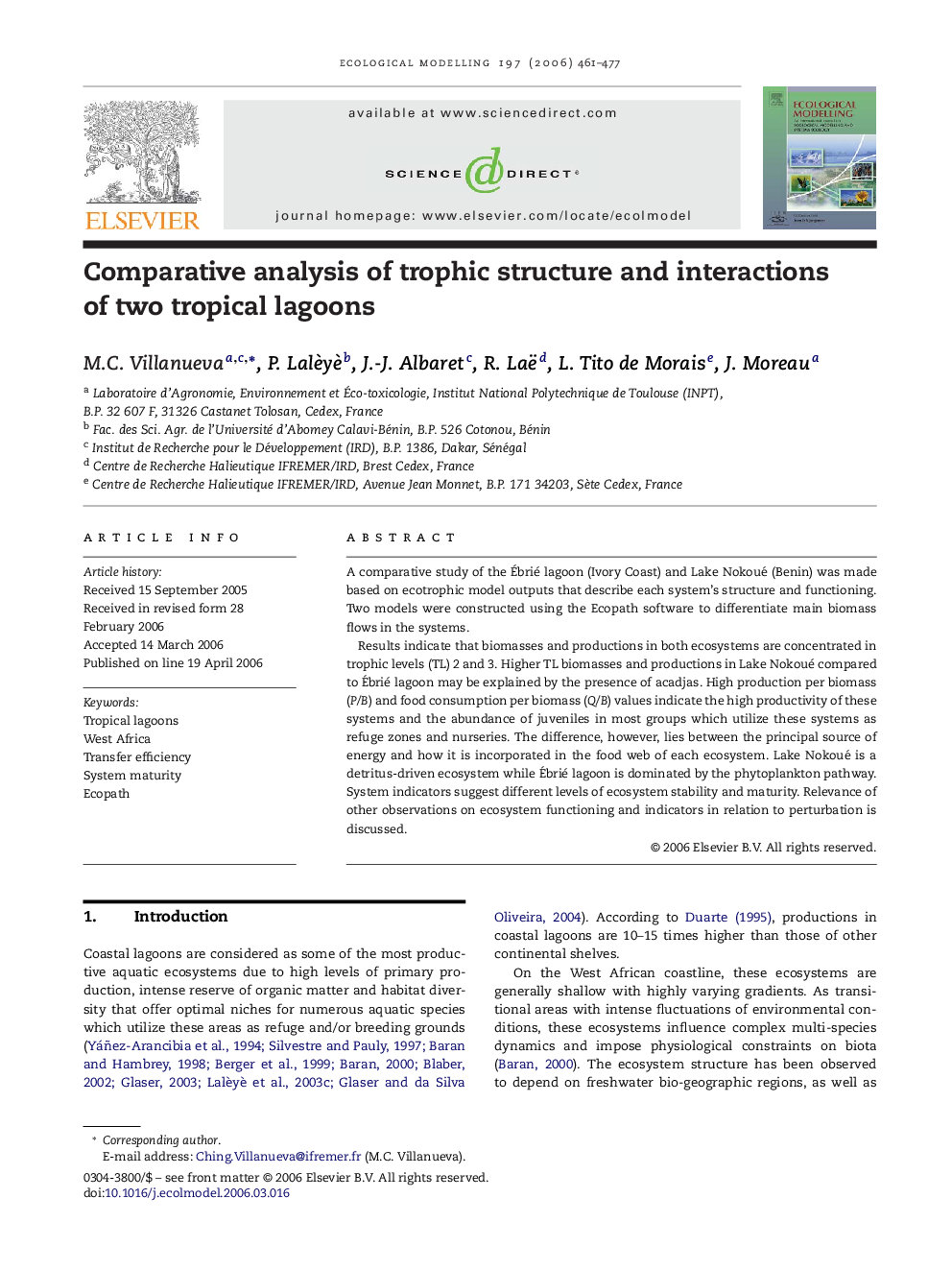| Article ID | Journal | Published Year | Pages | File Type |
|---|---|---|---|---|
| 4379224 | Ecological Modelling | 2006 | 17 Pages |
A comparative study of the Ébrié lagoon (Ivory Coast) and Lake Nokoué (Benin) was made based on ecotrophic model outputs that describe each system's structure and functioning. Two models were constructed using the Ecopath software to differentiate main biomass flows in the systems.Results indicate that biomasses and productions in both ecosystems are concentrated in trophic levels (TL) 2 and 3. Higher TL biomasses and productions in Lake Nokoué compared to Ébrié lagoon may be explained by the presence of acadjas. High production per biomass (P/B) and food consumption per biomass (Q/B) values indicate the high productivity of these systems and the abundance of juveniles in most groups which utilize these systems as refuge zones and nurseries. The difference, however, lies between the principal source of energy and how it is incorporated in the food web of each ecosystem. Lake Nokoué is a detritus-driven ecosystem while Ébrié lagoon is dominated by the phytoplankton pathway. System indicators suggest different levels of ecosystem stability and maturity. Relevance of other observations on ecosystem functioning and indicators in relation to perturbation is discussed.
